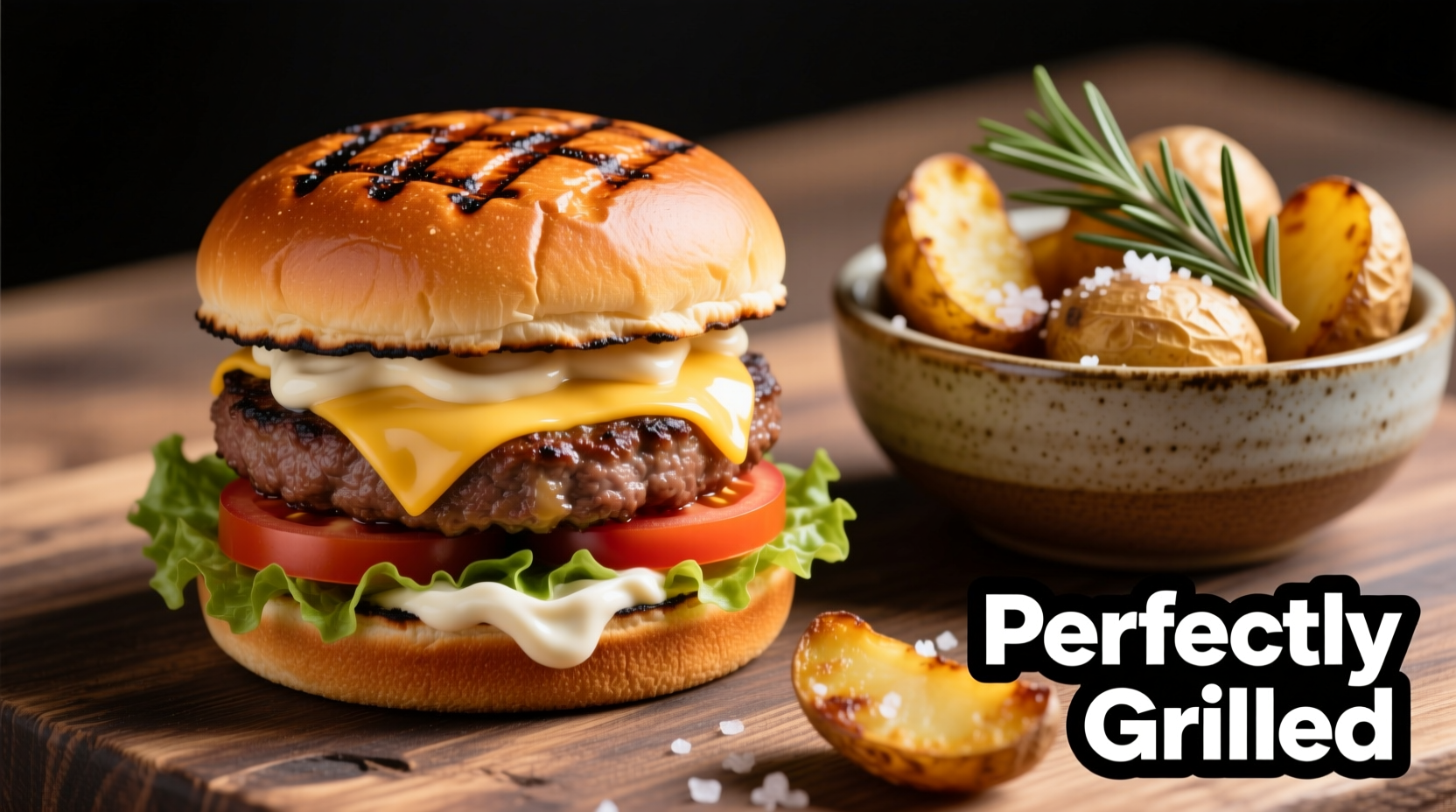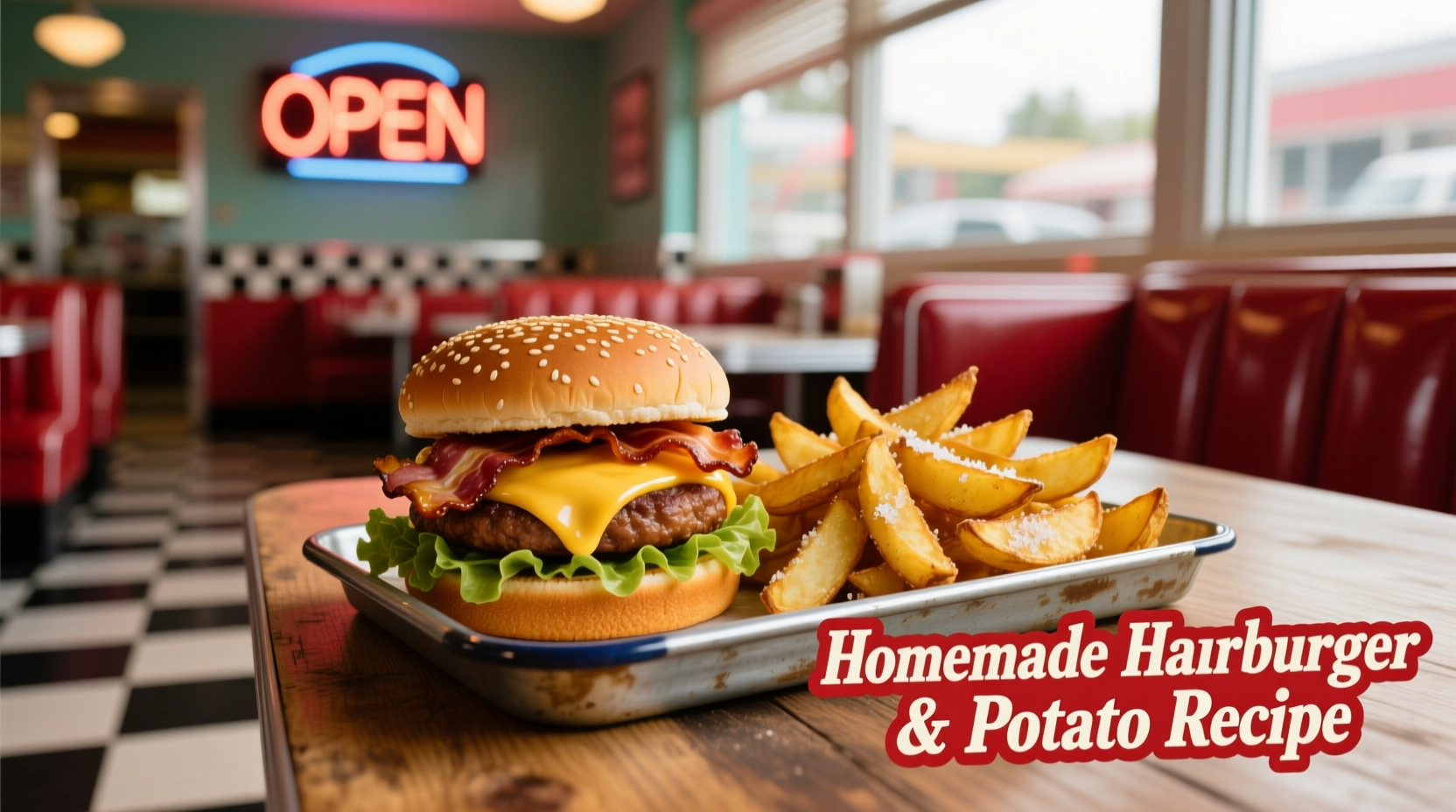Discover 5 perfected hamburger and potato pairings with professional chef-tested recipes, precise cooking temperatures, and time-saving techniques that guarantee juicy burgers and perfectly crisp potatoes every time. Includes USDA-approved safety guidelines, equipment alternatives, and make-ahead strategies for stress-free meal preparation.
When you're craving a satisfying meal that balances protein-rich comfort food with hearty starch, hamburger and potato recipes form the ultimate classic pairing. This guide delivers professionally tested combinations that solve the common problem of mismatched cooking times between burgers and potatoes—ensuring both components finish simultaneously with perfect results.
Why Hamburger and Potato Pairings Work So Well
The magic of hamburger and potato recipes lies in their complementary textures and flavors. While the savory, umami-rich burger provides protein satisfaction, potatoes offer versatile starch options that absorb flavors while providing contrasting textures—from crispy roasted edges to fluffy interiors. Food scientists at Cornell University's Food and Brand Lab confirm that starches like potatoes enhance the perception of meat flavors through aroma compound interactions, creating a more satisfying eating experience.
Essential Cooking Equipment for Perfect Results
Before diving into recipes, ensure you have these kitchen essentials:
- Cast-iron skillet or grill grate (for optimal sear)
- Instant-read thermometer (critical for food safety)
- Rimmed baking sheet (for even potato roasting)
- Mixing bowls (separate for raw meat and other ingredients)
Classic All-American Hamburger and Potato Dinner
This foundational recipe serves as your reliable weeknight solution with parallel cooking methods that finish simultaneously.
Perfect Grilled Hamburger Patties
Ingredients: 1½ lbs ground chuck (80% lean), 1 tsp kosher salt, ½ tsp black pepper, 1 tsp garlic powder, 4 hamburger buns, lettuce, tomato, onion
Instructions:
- Divide meat into 4 equal portions (6 oz each) and gently form into balls, then flatten to ¾-inch thickness
- Make a slight indentation in center of each patty to prevent bulging
- Season both sides with salt, pepper, and garlic powder
- Preheat grill to 400°F (medium-high)
- Cook patties 4-5 minutes per side for medium (145°F internal temperature)
- Rest 5 minutes before serving
Crispy Oven-Roasted Potatoes
Ingredients: 1½ lbs Yukon Gold potatoes (cut into 1-inch cubes), 2 tbsp olive oil, 1 tsp smoked paprika, ½ tsp garlic powder, ½ tsp dried rosemary, salt and pepper to taste
Instructions:
- Preheat oven to 425°F
- Parboil potatoes for 5 minutes in salted water, then drain and roughen edges
- Toss with oil and seasonings
- Spread in single layer on rimmed baking sheet
- Roast 25-30 minutes, flipping halfway, until golden and crisp
| Cooking Method | Best Potato Variety | Texture Result | Flavor Enhancement Tip |
|---|---|---|---|
| Oven Roasting | Yukon Gold | Crisp exterior, creamy interior | Add rosemary during last 10 minutes |
| Air Frying | Russet | Extra crispy with less oil | Mist with oil instead of tossing |
| Pan-Frying | Red Potatoes | Firm texture holds shape | Add onions for caramelized flavor |
| Grilling | Sweet Potatoes | Smoky exterior, tender interior | Brush with olive oil before grilling |
Timeline of Hamburger Evolution: From Hamburg to Your Plate
Understanding the historical context helps appreciate why certain cooking techniques work best:
- 1880s: Hamburg steak (minced beef patties) introduced to America by German immigrants
- 1904: First documented hamburger served at St. Louis World's Fair
- 1921: White Castle popularizes small, square hamburgers with onions
- 1930s: Addition of cheese creates the cheeseburger
- 1950s: Rise of backyard grilling culture transforms hamburger preparation
- Present: Artisanal approach with premium ingredients and precise temperature control
Gourmet Variations for Special Occasions
Elevate your hamburger and potato recipes with these chef-inspired combinations that maintain parallel cooking times.
Mushroom Swiss Burger with Truffle Parmesan Fries
Burger Upgrade: Add 2 tbsp Worcestershire sauce to meat mixture and top with melted Swiss cheese and sautéed mushrooms during last 2 minutes of cooking.
Potato Upgrade: Toss roasted potatoes with 1 tsp truffle oil and 2 tbsp grated Parmesan during last 5 minutes of cooking.
Southwest Style Burger with Chipotle Sweet Potato Wedges
Burger Upgrade: Mix 1 tsp cumin and ½ tsp chipotle powder into meat. Top with pepper jack cheese and avocado slices.
Potato Upgrade: Cut sweet potatoes into wedges, toss with 1 tsp chipotle powder and 1 tbsp maple syrup before roasting.
Food Safety Essentials for Hamburger Preparation
The USDA Food Safety and Inspection Service mandates specific temperature guidelines to prevent foodborne illness. According to their official guidelines, ground beef must reach 160°F internal temperature to be safe for consumption. This differs from whole muscle cuts like steaks, which can be safely consumed at lower temperatures.
Key safety practices:
- Never partially cook burgers then finish later
- Use separate cutting boards for raw meat and vegetables
- Wash hands thoroughly after handling raw meat
- Keep meat refrigerated below 40°F until ready to cook
- Discard any burgers that don't reach 160°F internally
Equipment Alternatives for Different Kitchen Setups
Not everyone has the same cooking equipment. These context-specific adaptations ensure success regardless of your kitchen setup:
For Apartment Dwellers (No Outdoor Grill): Use a cast-iron skillet on stove top. Preheat skillet for 5 minutes over medium-high heat before adding burgers. Finish under broiler for 1-2 minutes for charred effect.
For Small Kitchens (Limited Oven Space): Cook burgers on stovetop while preparing potatoes in an air fryer. Air fryer potatoes typically cook in 15-20 minutes at 400°F, matching stovetop burger timing.
For Outdoor Entertaining: Grill burgers while roasting potatoes in a disposable foil pan on indirect heat. This prevents burning while allowing simultaneous cooking.
Time-Saving Strategies for Weeknight Success
Professional chefs use these techniques to streamline hamburger and potato preparation:
- Prep Ahead: Form burger patties and store in refrigerator up to 24 hours before cooking
- Parallel Processing: Start potatoes first, then begin burgers when potatoes have 10 minutes remaining
- Make-Ahead Components: Roast extra potatoes and reheat in oven for future meals
- Double Batch: Cook extra burgers and freeze between parchment paper for future quick meals

Troubleshooting Common Problems
Even experienced cooks encounter issues. Here's how to fix them:
Problem: Burgers stick to the grill
Solution: Ensure grill is properly preheated (400°F) and clean. Oil the grates with a paper towel dipped in vegetable oil before placing patties.
Problem: Potatoes burn before cooking through
Solution: Parboil potatoes first to ensure even cooking. Reduce oven temperature to 400°F if using convection setting.
Problem: Burgers shrink significantly during cooking
Solution: Make a slight indentation in the center of each patty before cooking and avoid pressing down with a spatula during cooking.
Storage and Reheating Guidelines
Proper storage extends the life of your hamburger and potato recipes:
- Store cooked burgers and potatoes separately in airtight containers
- Refrigerate within 2 hours of cooking
- Consume within 3-4 days for best quality
- To reheat burgers: Wrap in foil and warm in 350°F oven for 10-15 minutes
- To reheat potatoes: Spread on baking sheet and re-crisp in 400°F oven for 8-10 minutes
FAQ: Hamburger and Potato Recipe Questions Answered
Here are answers to the most frequently asked questions about preparing perfect hamburger and potato combinations:











 浙公网安备
33010002000092号
浙公网安备
33010002000092号 浙B2-20120091-4
浙B2-20120091-4